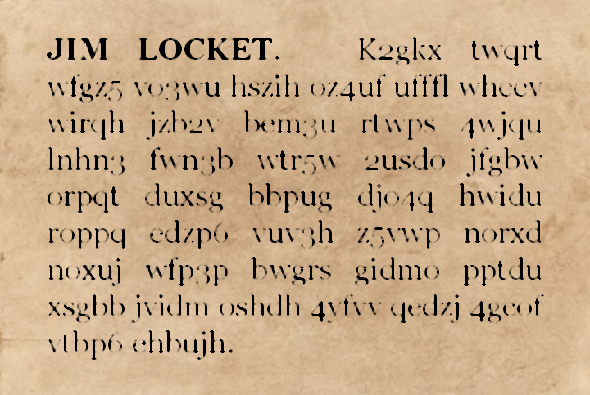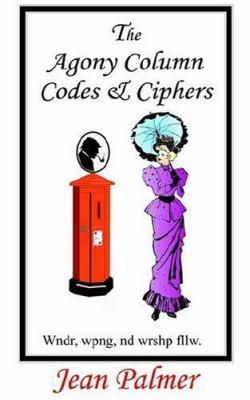In 1897, an unknown person published an encrypted advertisement in the Daily Telegraph. The only two words left in the clear are JIM LOCKET. Can a reader break this cryptogram?
The book The Agony Column Codes & Ciphers by Jean Palmer (i.e., Tony Gaffney, the co-author of my latest HistoCrypt paper) is a treasure trove for everybody interested in old cryptograms.
The Agony Column Codes & Ciphers introduces over a thousand encrypted newspaper advertisements from Victorian England. Tony, who is known as an excellent codebreaker, has deciphered most of these cryptograms, but some are still unsolved. On Klausis Krypto Kolumne I have published many an article about these.
Some of the encrypted ads covered in Tony’s book contain love messages. Others were placed by business people in order to send news to partners or customers. Ignatius Pollaky, a private investigator of the Victorian era, communicated via encrypted newspaper ads, too.
Some of the ads in the book make long series, the longest of which consist of over 50 parts. On the other hand, there are numerous single pieces. The advertisement I am going to introduce today is one of the latter kind. It was published in the Daily Telegraph on Monday, January 4th, 1897. It is reproduced in the following:
JIM LOCKET. – K2gkx twqrt wfgz5 vo3wu hszih oz4uf ufffl wheev wirqh jzb2v bem3u rtwps 4wjqu lnhn3 fwn3b wtr5w 2usdo jfgbw orpqt duxsg bbpug djo4q hwidu roppq edzp6 vuv3h z5vwp norxd noxuj wfp3p bwgrs gidmo pptdu xsgbb jvidm oshdh 4yfvv qedzj 4gcof vtbp6 ehbujh.
As can be seen, this ciphertext mainly consists of five-character blocks. This becomes even more apparent If we format the text in a different way:
JIM LOCKET. –
K2gkx twqrt wfgz5 vo3wu hszih
oz4uf ufffl wheev wirqh jzb2v
bem3u rtwps 4wjqu lnhn3 fwn3b
wtr5w 2usdo jfgbw orpqt duxsg
bbpug djo4q hwidu roppq edzp6
vuv3h z5vwp norxd noxuj wfp3p
bwgrs gidmo pptdu xsgbb jvidm
oshdh 4yfvv qedzj 4gcof vtbp6
ehbujh.
As no word boundaries can be be seen, word guessing is very difficult. So let’s start with frequency analysis. Here are the letter frequencies (counted with CrypTool 2; the two ceartext words are excluded):

Source: CrypTool 2
The alphabet used consists of 30 letters. The frequency distribution is too flat for a simple substitution (MASC). Perhaps, a homophonic cipher has been used. It would be interesting to examine this ad with hill climbing. Does a reader know where a hill climbing program that attacks homophonic ciphers is available?
Of course, there are other possibilities. The letter groups might stem from a codebook. It also seems possible that a Vigenère variant was used.
If a reader knows something, please let me know.
Follow @KlausSchmeh
Further reading: The Top 50 unsolved encrypted messages: 38. The Sufi Fiddle mystery
Linkedin: https://www.linkedin.com/groups/13501820
Facebook: https://www.facebook.com/groups/763282653806483/




Kommentare (17)